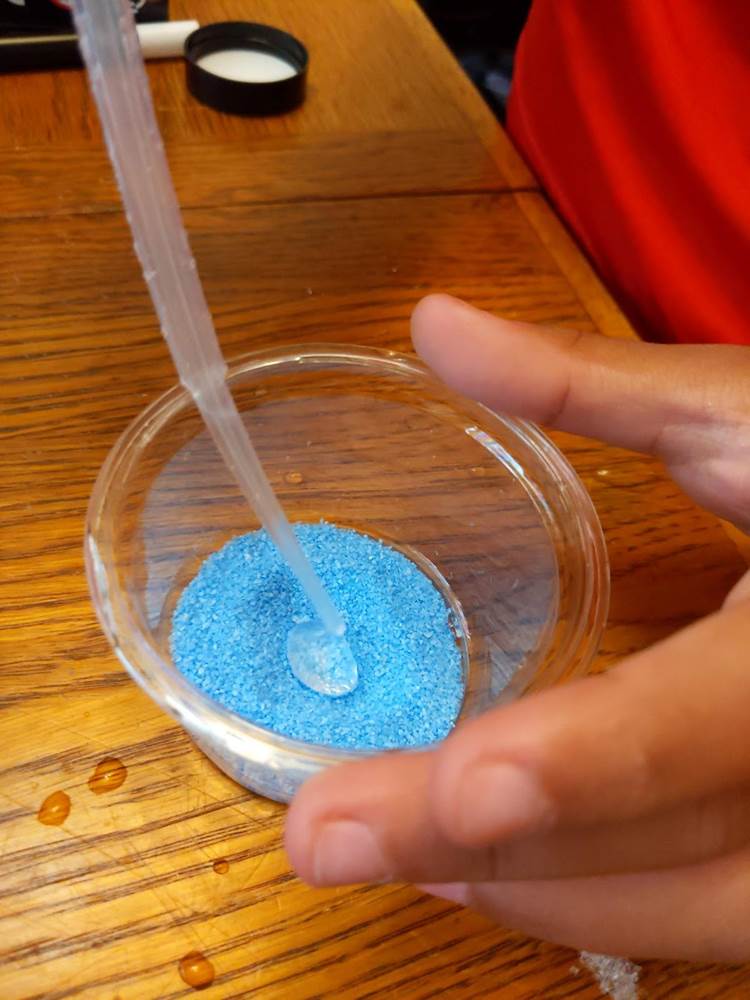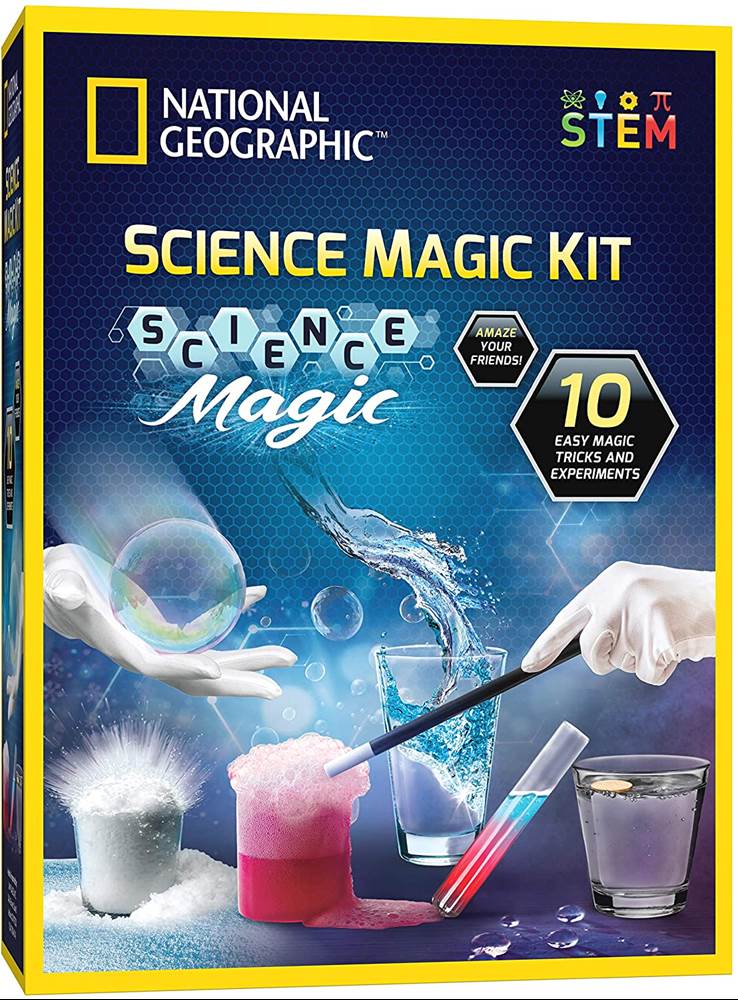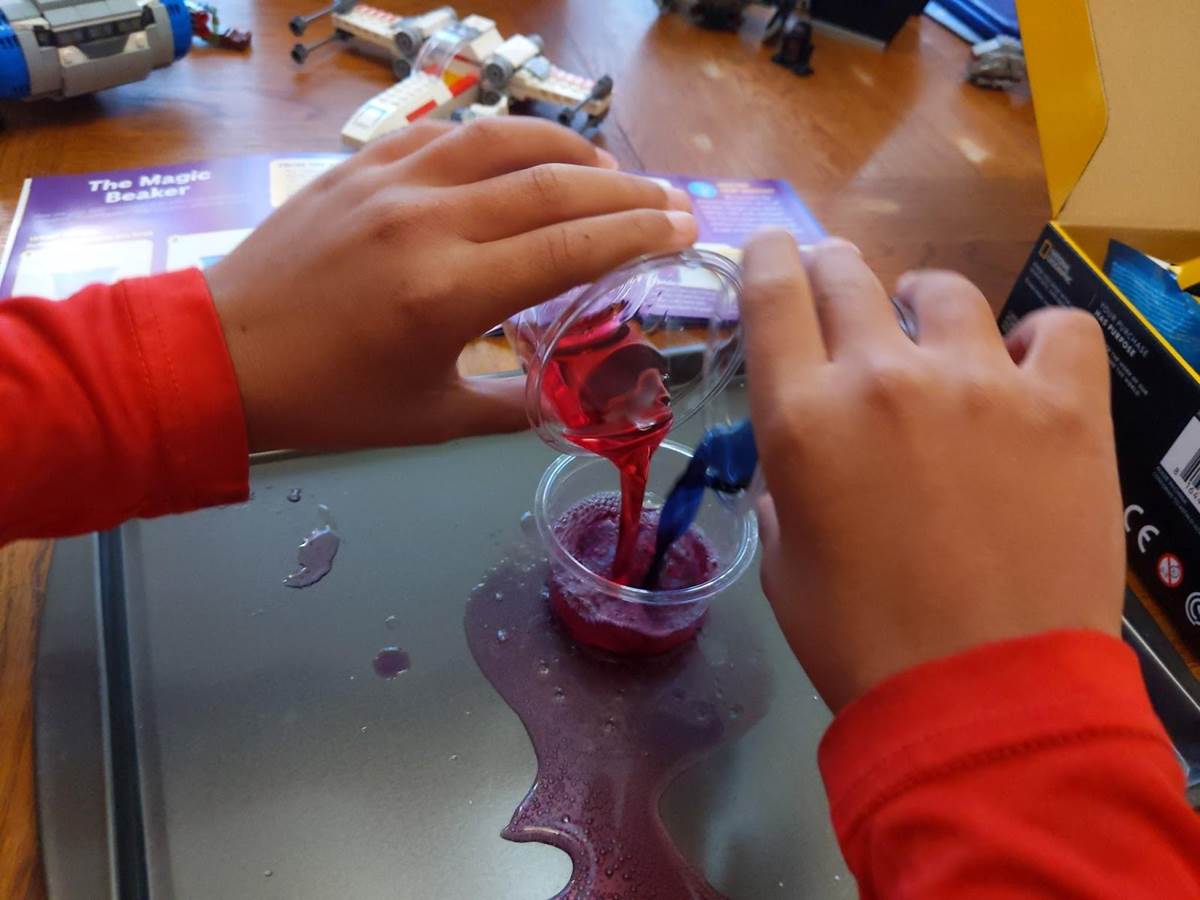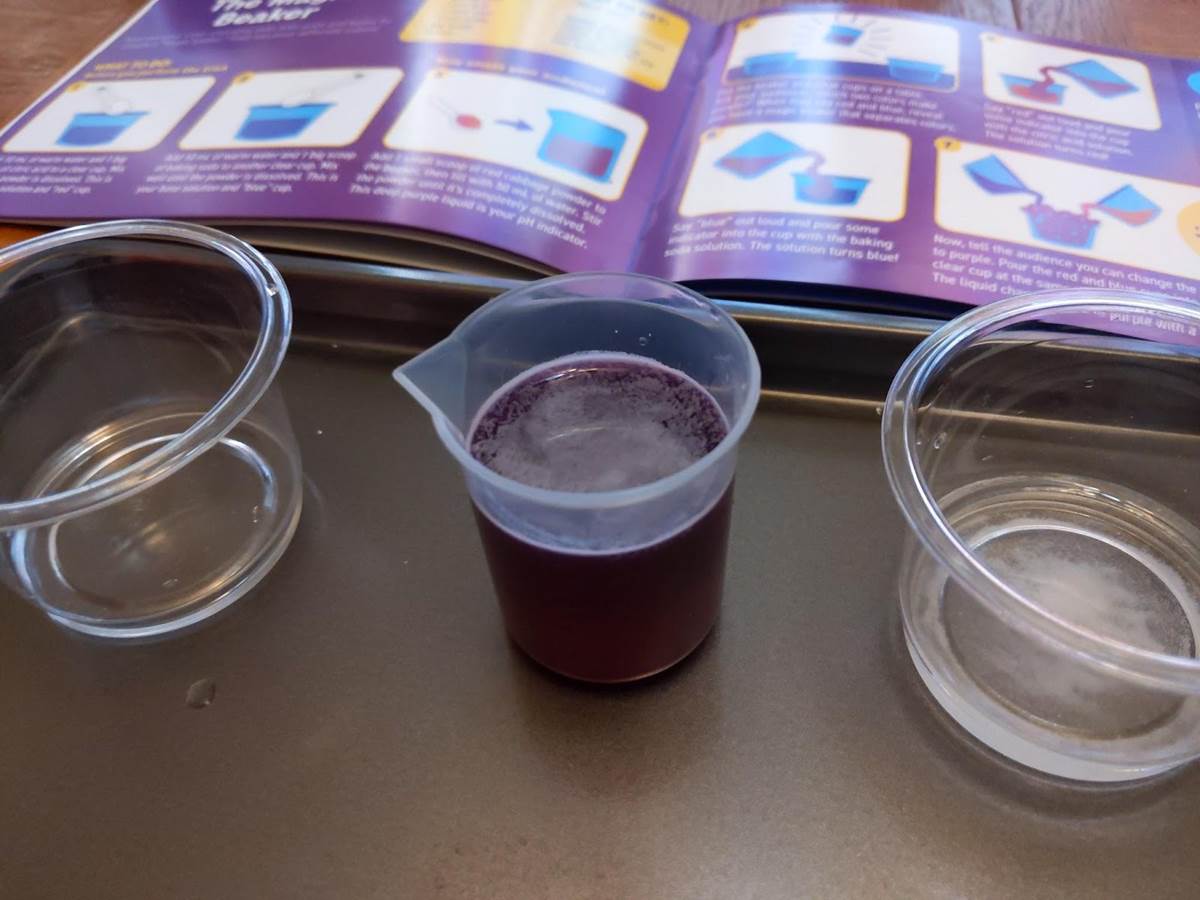Toy Review: National Geographic Science Magic Kit
Imagine your child amazing their friends by turning a clear liquid red by combining it with a purple liquid. Well, that is exactly the type of spectacular surprises offered in the National Geographic Science Magic Kit.
The scientific realities of acid reaction vs. alkaline reaction are at the foundation of this color changing magic. Other magic acts are based within a substance's unique ability to retain surprising amounts of liquid or repel fluids. The National Geographic Science Magic Kit adapts these chemical properties and interactions as tools to entertain with magic.
We found the instructions easy to follow and, aside from water, a paperclip and a small amount of dish soap, all other items needed for the kit’s experiments can be found in ample amounts. They even provide enough to let you practice a time or two before putting on a performance. My 11-year-old son and I enjoyed exploring these chemical principles. I suspect he is towards the upper edge of this kit’s target age group, but he thoroughly enjoyed showing off the tricks to his dad and a few of the neighborhood kids.
Among the scientific principles taught or demonstrated:
- Basic scientific techniques like observation, measurement, safety
- pH reaction of acid v. alkaline
- Carbon dioxide reaction
- Absorbent chemical properties
Not only does the kit ignite scientific exploration of how substances interact with each other but it also branched into deepening language knowledge by exposing users to Greek roots. Hydrophobic sand plays a key role in a couple of the kit’s experiments and the included instruction booklet introduces readers to the word’s Greek origins - Hydro (water) and Phobic (fear) along with its opposite of hydrophilic with Philic (love).

Water beads up on the hydrophobic sand
For about $15 for the Starter Kit (described here) or $35 for the Mega Kit, the National Geographic Science Magic Kit is excellent way to introduce young scientists to new concepts and fun and magical way.



